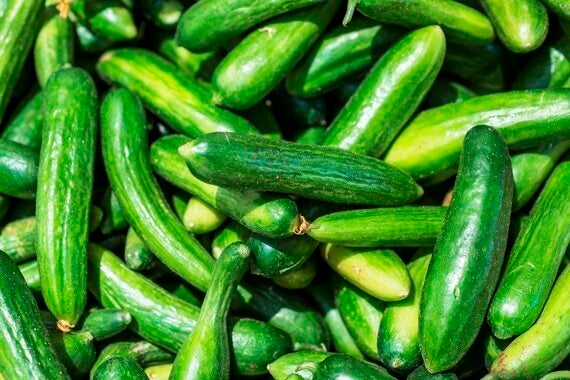As the UK referendum on Brexit approaches I feel obliged to stand forward and confess. The European Union is often criticized for dealing with ridiculous things such as the shape of cucumbers: banning the curved ones and imposing straight ones on farmers and consumers alike.

Well, this story is wrong for three reasons. First and foremost, it is not the European Union that has developed the current standard for cucumbers. It is the UN. Or to be more specific my organization, the United Nations Economic Commission for Europe (UNECE). In fact, the European Union does not have a specific cucumber standard but traders can refer to the UNECE standard to meet the EU's general marketing requirements. Therefore, don't blame the EU, blame us.
The second reason is that the standard does not force all cucumbers to be equally straight. It is correct that an Extra Class or Class I cucumber can only bend 1 centimeter for each 10 centimeters. But a Class II cucumber can actually bend 2 centimeters for each 10 centimeters. There are straight cucumbers and not so straight cucumbers.
But the third and most important reason for why the story is wrong, is because these agricultural standards, covering some than 100 fruits and vegetables, are very useful and widely used. The standards not only facilitate trade, they also help producers get a better price for better quality. Traders in the UK can buy cucumbers from Spain or Morocco, or any other country by simply referring to the standard. They will then be able to compare prices, knowing exactly what they will get. There is no need to travel all the way to where the cucumbers are grown to inspect them. The quality is defined by the standard. So, if you order Class I cucumbers, you will get Class I cucumbers. This is trade facilitation at its best. And the producers of Class I cucumbers, wherever they might be, will get the premium for a Class I cucumber.
But, you could argue, why do they have to be straight? What about all the curved cucumbers that are then wasted? Should we not fight food waste? Yes, we should. But, this is also part of the logic behind the cucumber standard. Very curved cucumbers are difficult to store in boxes and, when transported, they bump into each other and end up with bruises, especially when travelling longer distances. This means that they will get soft spots and start rotting before even arriving at the supermarket and will have to be thrown away. Moreover, many cucumbers are processed by machines, and, if they are very curved, they will get stuck in the machine and have to be thrown away. Finally, experience shows that consumers tend to choose straight cucumbers, so even if the curved ones make it to the shop, some of them will probably be wasted anyway.
It is therefore better to sell and eat curved cucumbers locally in the producing countries. Curved cucumbers are just as delicious as straight ones but not every cucumber is meant to travel and end up in a supermarket. Curved ones can be sold directly by local farms or on local markets or, if no longer edible, they can be collected and used as animal feed or turned into compost.

The cucumber standard is a good standard. And the world needs significantly more cooperation on standards of all kinds, be it in the UN or in the EU. And even if you do not agree, then remember if you hear the cucumber critique: do not blame the EU. Credit the UN.
